![]()
![]()
![]()
Use LEFT and RIGHT arrow keys to navigate between flashcards;
Use UP and DOWN arrow keys to flip the card;
H to show hint;
A reads text to speech;
11 Cards in this Set
- Front
- Back
- 3rd side (hint)
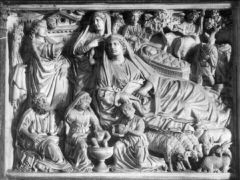
|
Nicola Pisano Annunciation, Nativity, and Adoration of the Shepards 1259-1260 Marble
|
3 scenes are depicted |
|
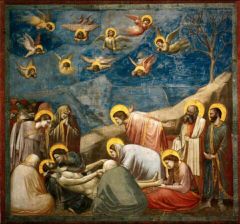
|
Giotto di Bondone (Giotto) Lamentation 1305 Buon fresco technique |
|
|

|
Duccio di Buoninsegna (Duccio) Betrayal of Jesus 1309-1311 Tempera and gold leaf on wood |
|
|
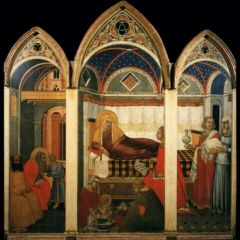
|
Pietro Lorenzetti Birth of the Virgin 1342 Tempera on wood |
|
|
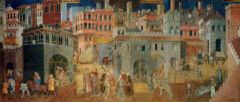
|
Ambrogio Lorenzetti Peaceful City detail from Effects of Good Government in the City and in the Country 1338-1339 Fresco |
|
|
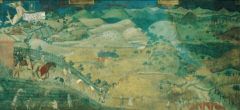
|
Ambrogio Lorenzetti Peaceful Country detail from The Effects of Good Government in the City and in the Country 1338-1339 Fresco |
|
|
|
The Great Schism |
-1305 election of French Pope, based in Avignon -1378 election of two Popes (Clement VII and Urban VI) -1417 election of new Roman Pope (Martin V) -The absence of a Pope in Italy for most of the 14th century lead to a rise in monastic orders and confraternities |
|
|
|
Monastic Order |
An organization of monks living according to the same rules, for example the Benedictine, Franciscan, and Dominican orders |
|
|
|
Explain the buon fresco technique. Name one advantage and one disadvantage it has over fresco secco. |
Buon fresco- painting permanent limeproof pigments, diluted in water, on freshly laid lime plaster. Fresco secco- painting on dried lime plaster Advantage of buon fresco- it's very permanent Disadvantage of buon fresco- time-consuming and demanding |
|
|
|
Describe 2 changes or significant developments (political, economic, social, historical) associated with the transition from the Middle Ages to the Renaissance |
-The Great Schism -The Black Death -Humanism |
|
|
|
Why is the 13th century in Italy sometimes referred to as the "Proto-Renaissance" rather than the Late Medieval period? |
People were ahead of their time. Certain artists (such as Giotto) were bringing about the rebirth of Greco-Roman naturalism. |
|

